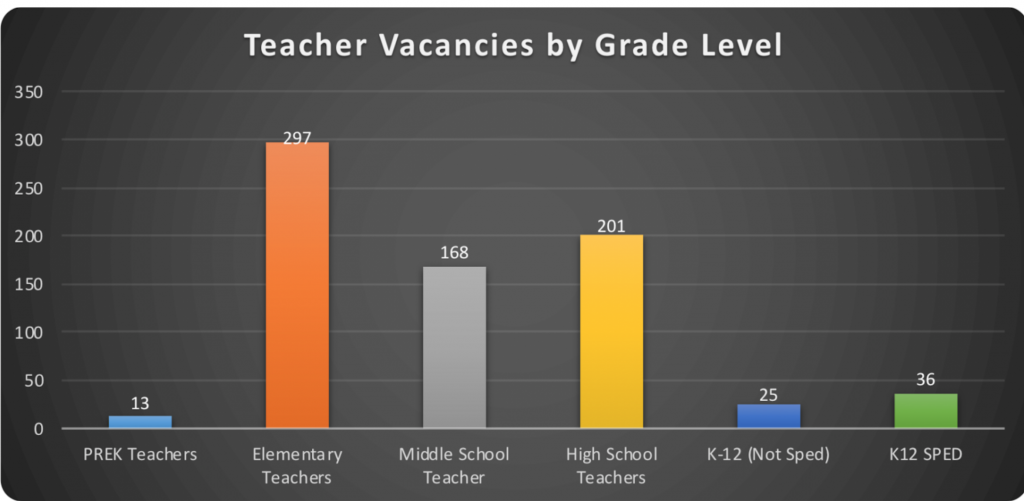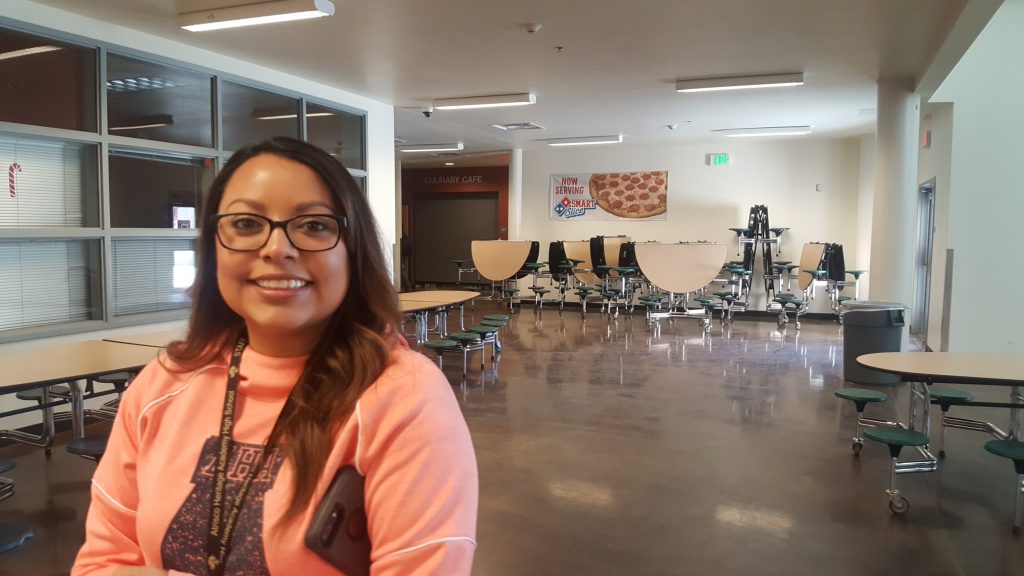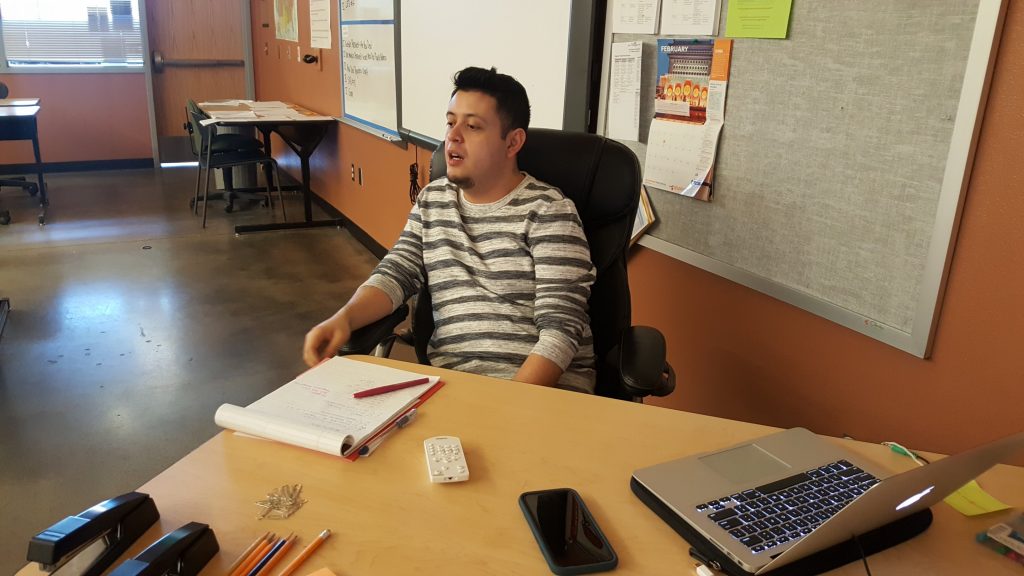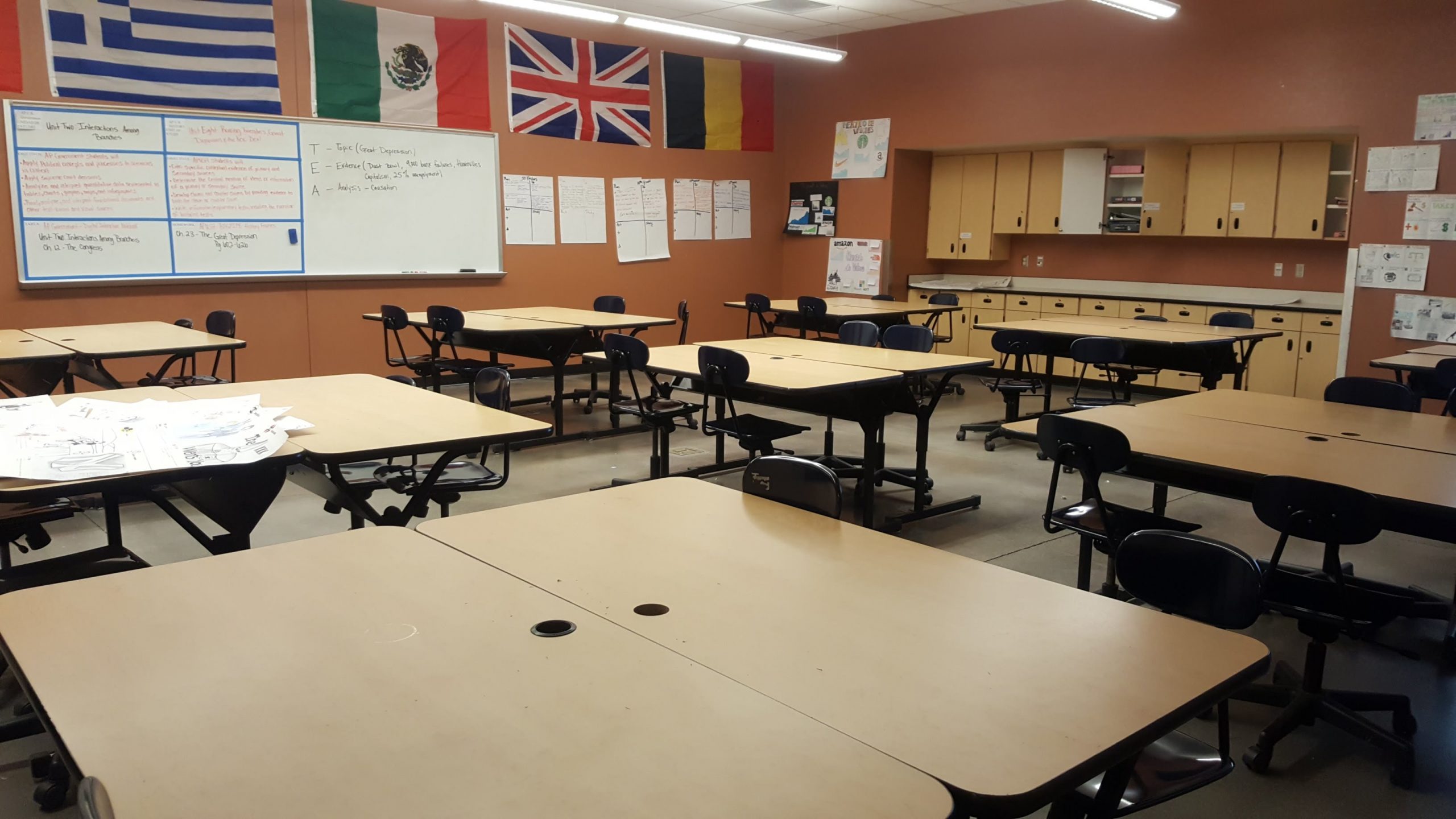Teacher vacancies have become an epidemic in New Mexico, as there are now 740 positions to be filled in grade levels K-12. As of 2016, the need for educators had increased by nearly 60 percent.
Breaking things down by grade level, most vacancies — 297 — are available in elementary schools. Followed by 201 in high schools and 168 in middle schools.
The central region of the state — which is comprised of Albuquerque, Belen, Bernalillo, Los Lunas, Rio Rancho and Santa Fe — accounts for more than half of the teacher vacancies.

Johanna King, Albuquerque Public Schools Communications Director explained there are several reasons for this shortage.
“We have heard that fewer young people are going into teaching for a variety of reasons including low pay, mandatory testing and what some feel are unfair expectations and evaluations,” King Said.
According to a survey in 2017 by New Mexico State Southwest Outreach Academic Research Lab, the report states that out of 1,900 interviewees, half responded “no” when asked if they were advised to pursue a career in education.
APS has seen foreign teachers as a solution. Teachers from Mexico, Spain, and the Philippines have arrived in New Mexico to take on jobs that have not been covered by local teachers. For instance, APS offered teaching jobs to about 60 people from the Philippines this year.
Cristina Benitez de Luna, Atrisco Heritage Academy High School’s Vice-principal, believes this is a sign that the state is not creating and developing enough teachers.

“Having to look for teachers in other countries or other states, is telling us that we should start from the basics and develop teachers and that passion for teaching at an earlier age in students,” Benitez de Luna said.
Special education, bilingual, math and science are among the subjects with the greatest need of teachers. A large portion of these subjects are being covered and taught by substitute teachers.
APS, in collaboration with the University of New Mexico and Central New Mexico Community College, has begun an initiative called the Special Education Teacher Training program or SETT to increase teacher ranks and to attract more students and professionals into teaching.
The lack of instructors stems from individuals neglecting to pursue a career in education —whether in a four-year institution, two-year institution and, or private institution — as reported by the Education Preparation Programs (EPPs) in New Mexico.
“According to the 2017 Educator Vacancy Report, UNM saw a 42.2% decrease in their number of educator preparation program completers from 434 in 2010 to 251 in 2017, and NMSU saw a 58.2% decrease from 294 in 2010 to 123 in 2017. Once again there is a decrease in completers for both major universities, down to 203 and 115 respectively for 2018,” the New Mexico State SOAR report said.
While there’s been a recent increase of enrollees in EPPs, this does not guarantee these students will fulfill the necessary requirements to acquire a teaching license in New Mexico, nor does it presume that they will remain to teach in the state.
The issue also has political implications.
Christopher Gallegos, teacher at Atrisco Heritage Academy high school, believes teachers should be evaluated differently by the state.
“With the recent cancellation of PARCC, it’s a big step forward. Many colleagues were affected by the evaluations based on the students results. Many times students do not reflect the quality of the teacher,” Gallegos said.

With the new governor, Michelle Lujan Grisham, in Santa Fe, education might experience reforms that boost public education spending.
“We are closely watching what is happening in Santa Fe. There is a lot of talk about putting more money into public education not only to increase salaries but to provide more support and programs,” King said.
Joshua Grajeda and Sergio Guerrero can be followed on Twitter @JoshGee_ and @Sergiogreports
